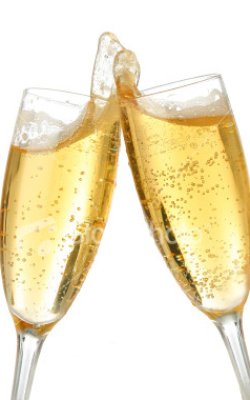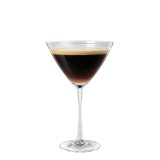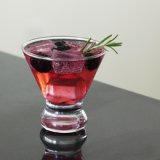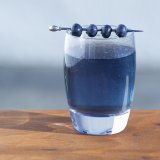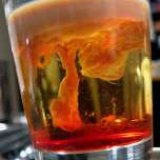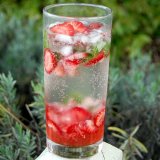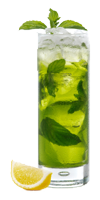Champagne is the King of sparkling wines. When you think sparkling, what immediately comes to mind – Champagne. Yet, Champagne can still be a conundrum. You look at the label and it looks like it was written in Greek. What does Brut mean or what is a Blanc de Blanc? Well, this Champagne Primer is here to help you decipher those labels and provide some basic information on Champagne.
Basics
Champagne can only be made in a small region in north-eastern France called Champagne. It is made from a blend of wines made from a combination of Chardonnay, Pinot Noir and Pinot Meunier grapes. However, sometimes, the wines are only made from Chardonnay (Blanc de Blanc) or Pinot Noir and/or Pinot Meunier (Blanc de Noir). After the still wine has been made, the wine is bottled with yeast and sugar for a second fermentation in the bottle. This is when the magic happens! The yeast go to work and create the bubbles and that toasty, yeasty, creamy flavors that you get in Champagne. For non-vintage Champagne, the wine must go through secondary fermentation where the yeast remains in the bottle for at least 18 months For vintage Champagne, it is at least 3 years. This process is called the Method Champenoise. Champagne production is strictly controlled by the Champagne AOC, which regulates Champagne production. If possible, drink non-vintage Champagne within one year of disgorgement of the yeast (some producers have the date of disgorgement stamped on the back of the bottle).
Serving
Champagne should be served chilled at approximately 42 to 50 degrees. The better the Champagne, the higher the temperature that you will want to serve it as to allow the aromas and flavor characteristics to shine. The best way to chill Champagne is in a bucket filled with ice and water with kosher salt (the salt helps decrease the temperature quickly) for approximately 15-45 minutes. But, if you don’t have a bucket or a big enough bucket, you can chill it in the refrigerator for approximately 30-60 minutes or in the freezer for 15-45 minutes. For really fine Champagne, I would not use the refrigerator to freezer to chill the Champagne. However, if you choose the refrigerator route, don’t leave the Champagne in the refrigerator for more than a day or two or the cork starts picking up the flavors in the fridge. If you take the freezer route, don’t leave the Champagne in the freezer for more than a hour or it will begin to freeze and once frozen solid, will explode. Believe me, I know this from experience, and not only are you upset about the loss of Champagne but the clean up is messy with massive amounts of small shards of glass.
Champagne should be served in a Champagne flute. The flute shape helps preserve the bubbles and display the aroma. Champagne coupes were the original glass that was used to serve Champagne but the greater surface area allows the bubbles to go flat much quicker. But, if the Champagne gets consumed quickly, as it usually does, the Champagne coupe makes for an elegant alternative. I particularly like to use them for Champagne cocktails. The rumor is that the Champagne coupe was based on Marie Antoinette’s breast.
Styles
Non-vintage – this is a blend of Champagnes from different vineyards, different wines and different years. Non-vintage Champagnes show the “house style” of producers and made to be consistent from year to year. Most Champagne consumed is non-vintage.
Vintage – this is Champagne that is made from one year. Vintage Champagnes are only made in certain years when the wine meets quality standards.
Rose – this is “pink” Champagne that is produced by allowing the grapes to have skin contact with the Pinot Noir or Pinot Meunier grapes or adding red wine.
Blanc de Blanc – this is Champagne that is made from only the white Chardonnay grape.
Blanc de Noir – this is Champagne that is made from only the red Pinot Noir and/or Pinot Meunier grapes.
Sweetness
Extra Brut is the driest Champagne (6 grams per liter).
Brut is a dry Champagne (6-15 grams of sugar per liter). This is the Champagne that people drink most often.
Extra Sec is a Champagne that is dry or has a touch of sweetness (12-20 grams of sugar per liter).
Sec is a lightly sweetened to sweet Champagne (17-35 grams of sugar per liter).
Demi-Sec is a sweet Champagne (33-50 grams of sugar per liter). This is the style of Champagne that should be drunk with wedding cake.
Doux is a lusciously sweet Champagne (50 grams plus of sugar per liter). This style of Champagne is hard to find.
Bottle Size
Magnum – 2 bottles (each bottle is 750 ml)
Jeroboam – 4 bottles
Rehoboam – 6 bottles
Methuselah – 8 bottles
Salmenazar – 12 bottles
Balthazar – 16 bottles
Nebuchadnezzar – 20 bottles
Other Champagne Terms
RM (Recoltant-Manipulant) – grower-producer; these Champagnes are becoming much more popular with the producers having much smaller production than the Champagne houses, like Taittinger, Moet or Veuve Clicquot.
CM (Cooperative-Manipulant) – cooperative producer; a number of grower-producers band together to grow the grapes and then produce the Champagne.
NM (Negociant-Manipulant) – Champagne houses; larger Champagne producers, like Moet, Perrier-Jouet and Krug; they grow some of their grapes and buy grapes. These Champagne producers have “house styles” for their Champagne.
Beads or Beading – this is when the bubbles swirl together in beads; can be used to assess quality but it doesn’t work all the time.
For more information on Champagne, check out the highly informative website by the Champagne Bureau.
Please note that a number of the terms overlap with other sparkling wines but not all.

